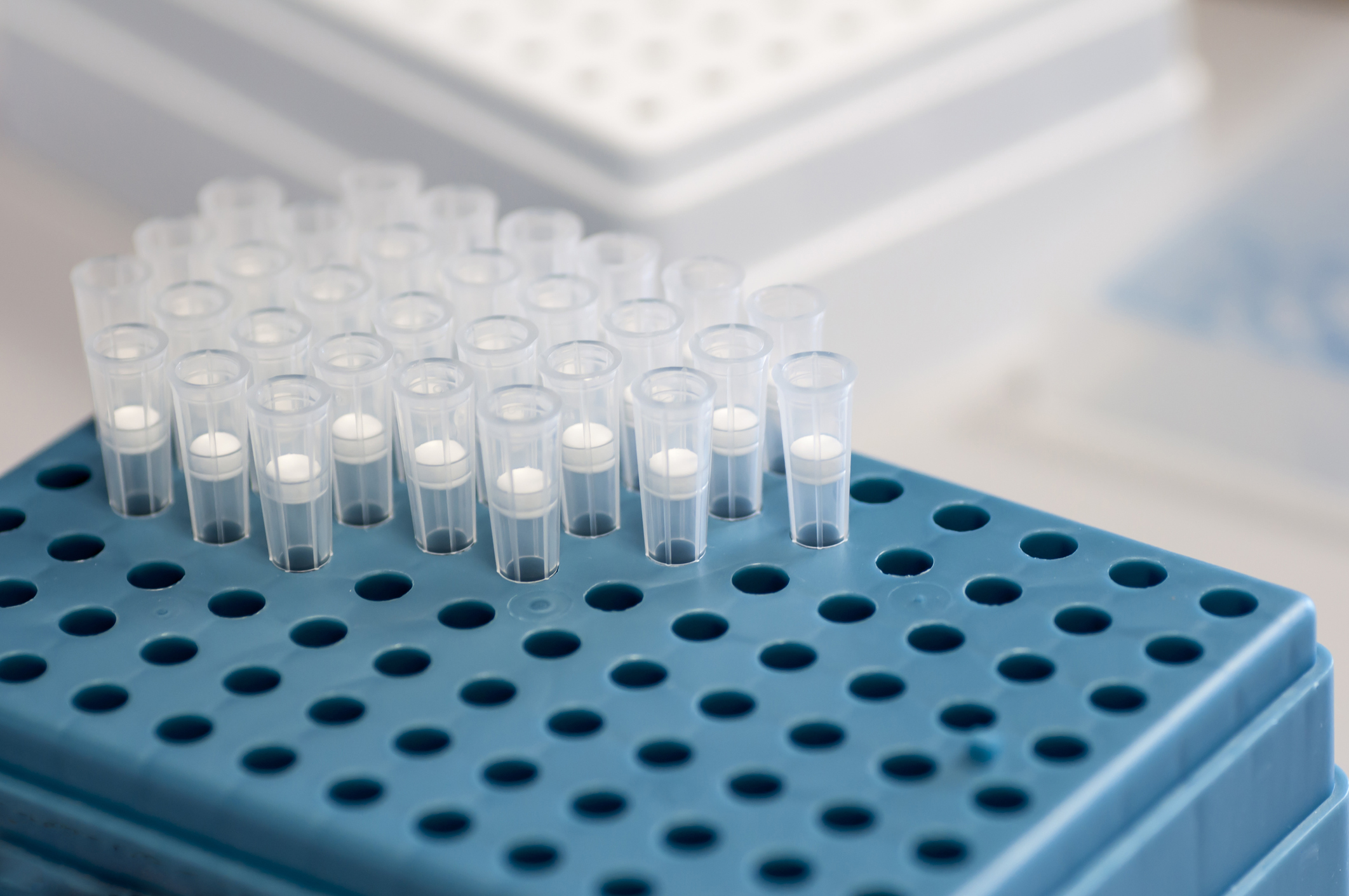Introduction to RNA extraction kits
Many scientific questions and techniques call for RNA extraction from a sample. The process of extracting RNA (ribonucleic acid) is different from extracting other biological molecules, even DNA (deoxyribonucleic acid). With an RNA extraction kit, it is crucial to be extra careful to not introduce nucleases anywhere. Nucleases are enzymes that can break down RNA very easily and they are present everywhere, even on our skin. During the coronavirus outbreak there was a focus on extracting RNA for reverse-transcriptase PCR (RT-PCR) for detecting samples positive for Sars-Cov-2. There are several methods for extracting RNA, some of which are available as kits. To extract RNA one can use a density gradient centrifugation, chromatography with an oligo-dt column, a phenol-chloroform extraction, glass fiber membranes, or magnetic beads. The latter three techniques are available commercially as RNA extraction kits.
Comparison of RNA extraction kits
Phenol-chloroform: These compounds are often used to separate RNA from a mixture containing RNA, DNA, and proteins. Phenol-chloroform is sold as a reagent in RNA extraction kits along with columns for purification. Biological components are separated by their pH between two phases, organic and aqueous, created by the reagent. The protocol for this type of extraction involves centrifugation steps, and ethanol washes.
Spin columns: Spin columns can be used to do solid phase extraction. Columns are made with either glass fiber membranes, other variants of silica, or ion exchange membranes. The principal of this method is that nucleic acids bind glass, silica, or certain ions. The extraction of either DNA or RNA is controlled by the pH and salt composition of the reagents used. The pH and salt conditions at which RNA is extracted is different than DNA. Kits make the process easier and faster, though the spin columns unfortunately can have limited binding capacity.
Magnetic beads: Magnetic beads for RNA extraction are a newer technology for RNA purification. Magnetic beads are coated for certain biological specificites. Silica coated magnetic beads are used to capture nucleic acids, controlling for RNA or DNA with reagent pH and salts. Oligo-dt coated magnetic beads are used to capture mRNA by their polyA tail. Magnetic bead based RNA extraction kits are now the easiest and most efficient RNA extraction kit available. The advantage is that there are no centrifugation steps, and washes are more precise because all the material of importance is bound tightly by a magnetic separator.
Considerations for RNA extraction kits
There are kits available for all types of RNA extraction, whether the RNA of interest is total RNA, viral RNA, mRNA, microRNA, or a specific sequence of RNA. One must consider factors important to the extraction being done. Organic extraction is a classic method which has been developed over many years of use, making it available for many types of extractions, even difficult ones. Magnetic bead RNA extraction kits are a newer technique, which have created opportunities to scale up extraction with the availability of larger magnets for biological separation. Modern Biomagnetic Separation systems can produce samples with higher purify and concentration than previous classic methods and scale the batch volume up to tens of liters for important international products such as vaccine-manufacturing.





